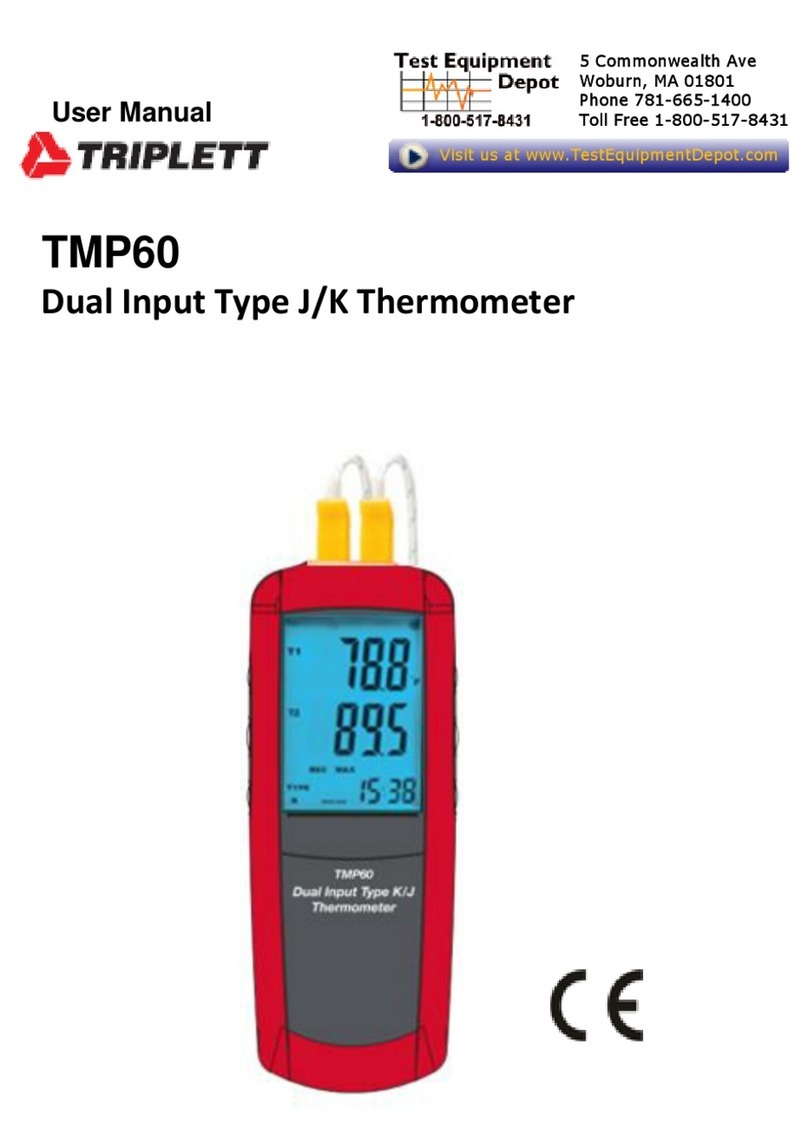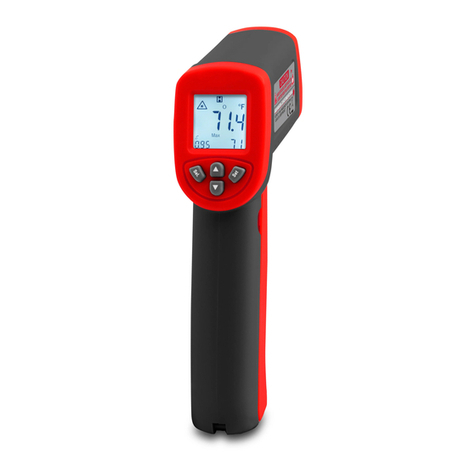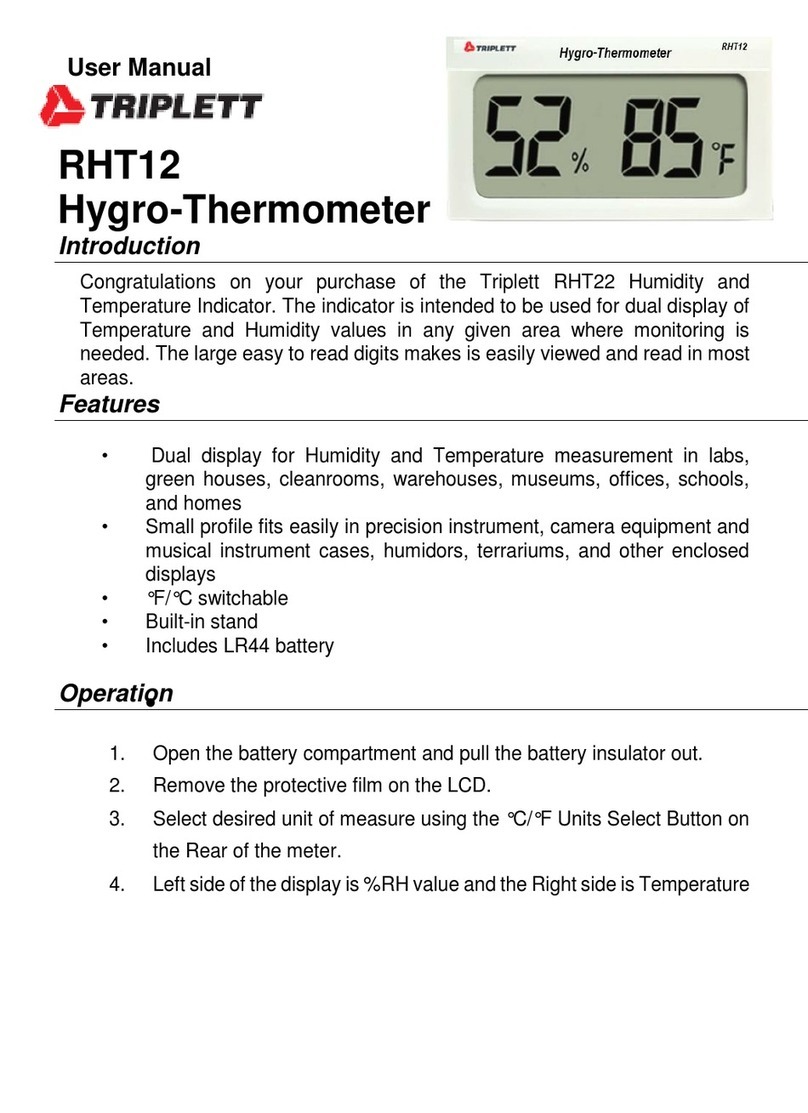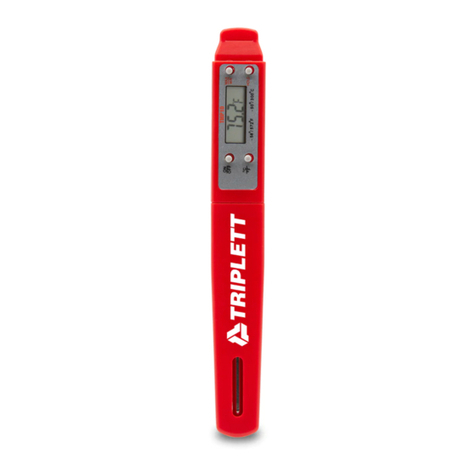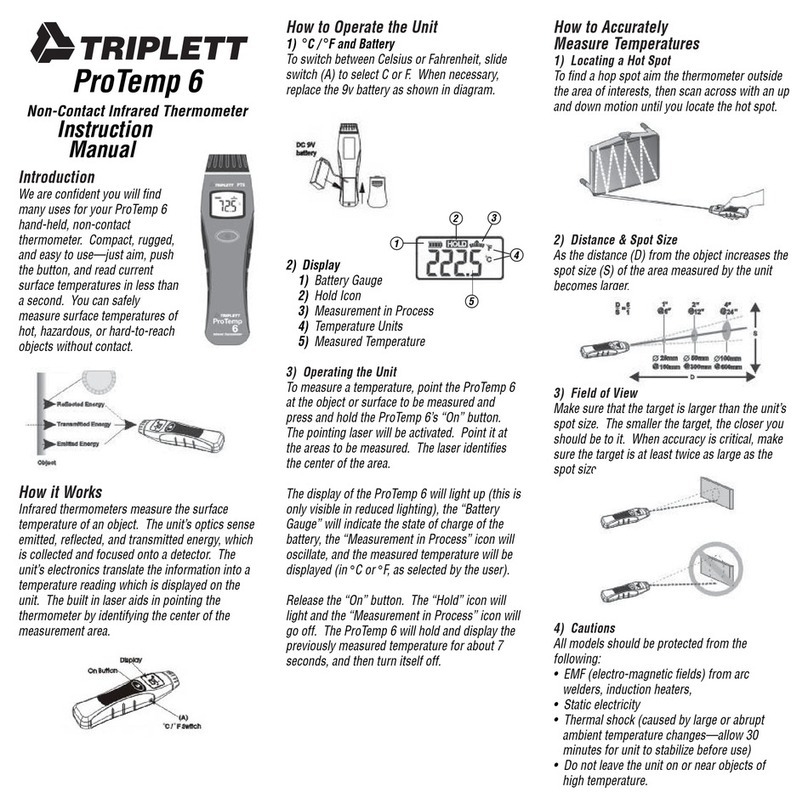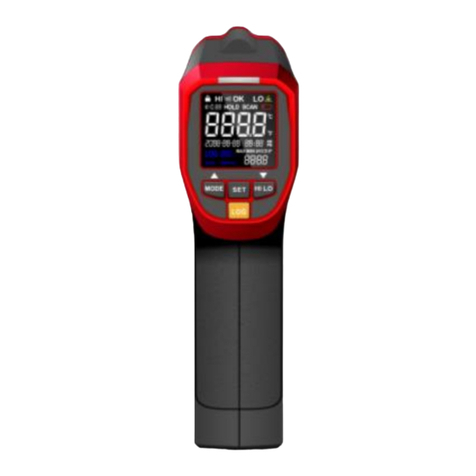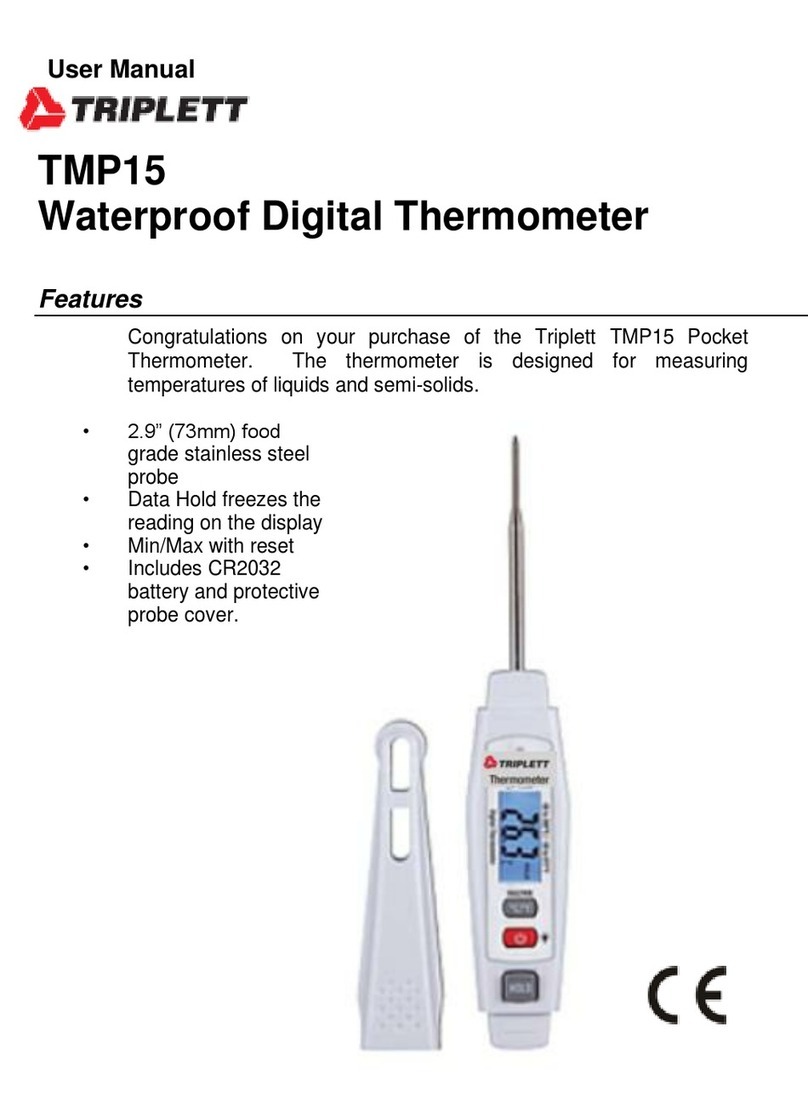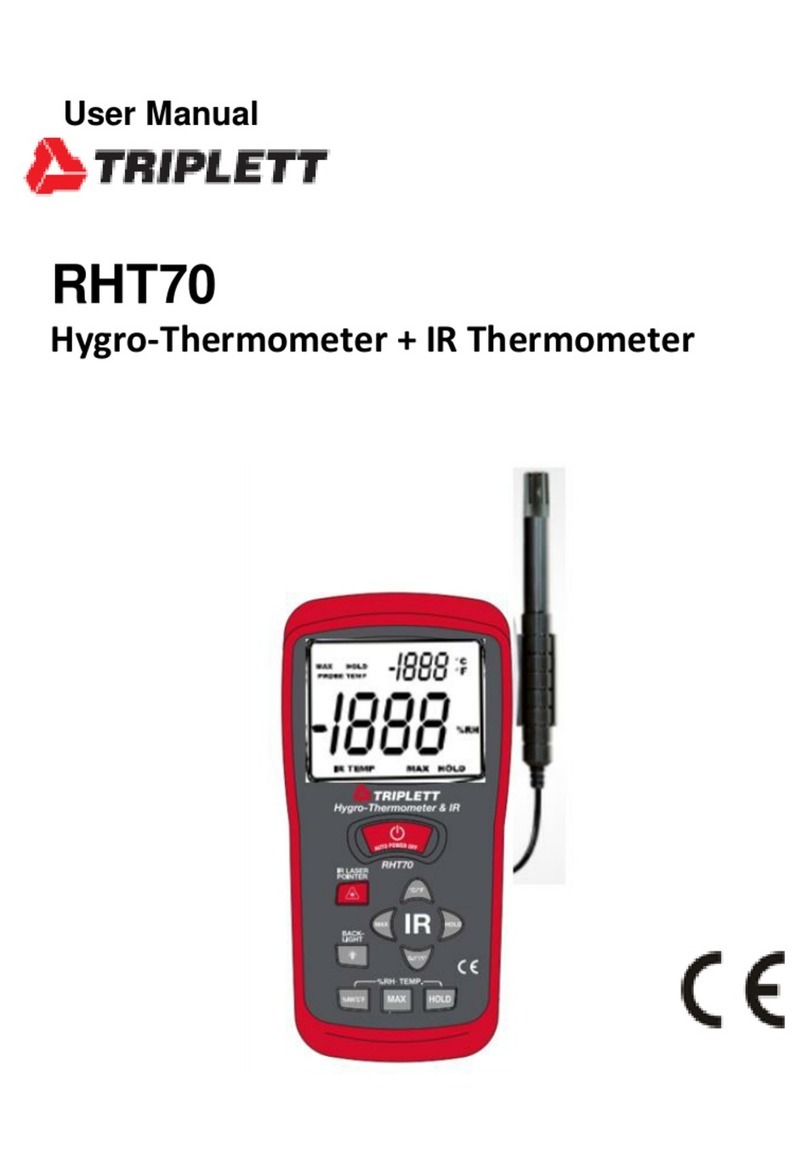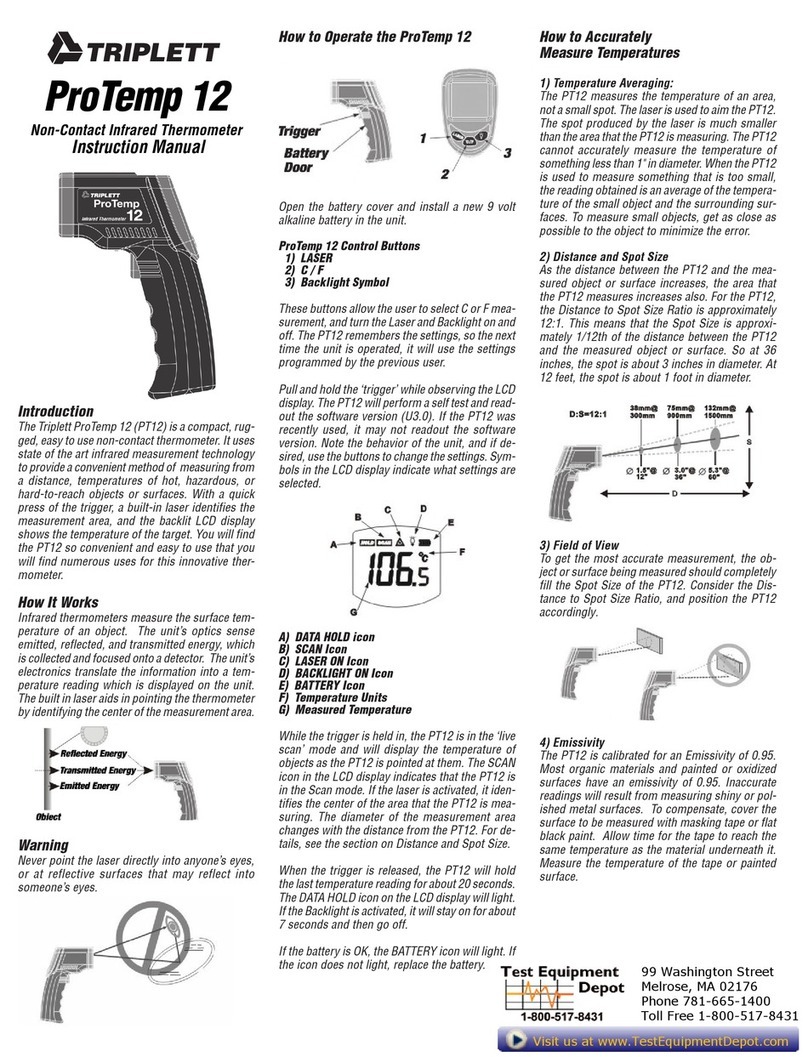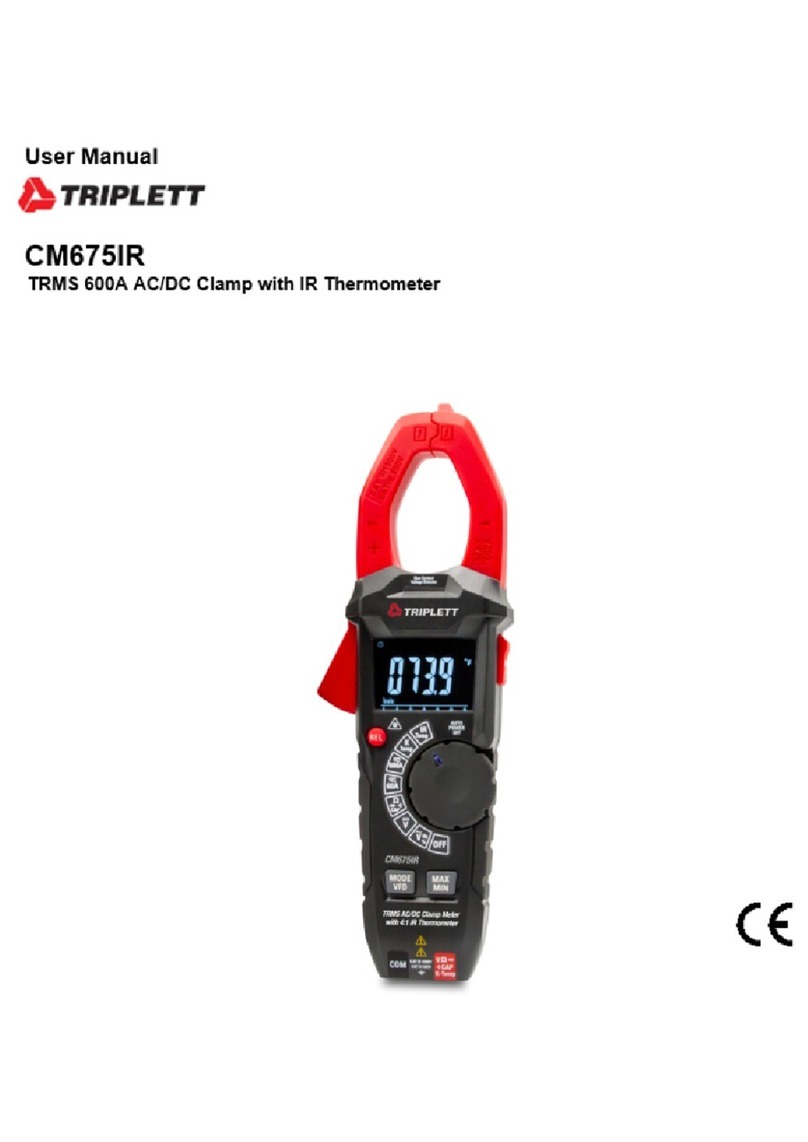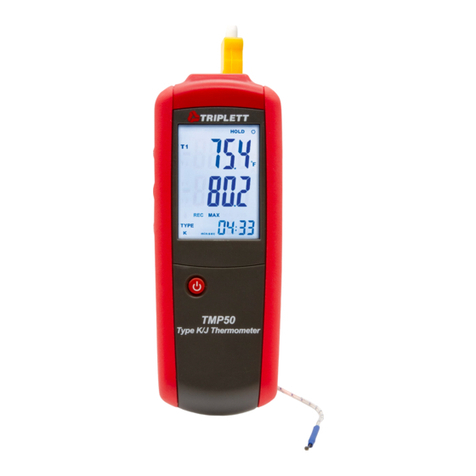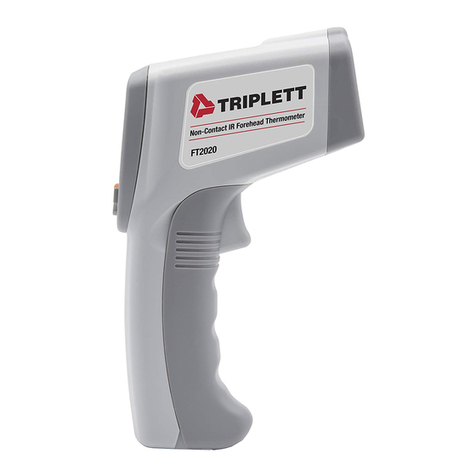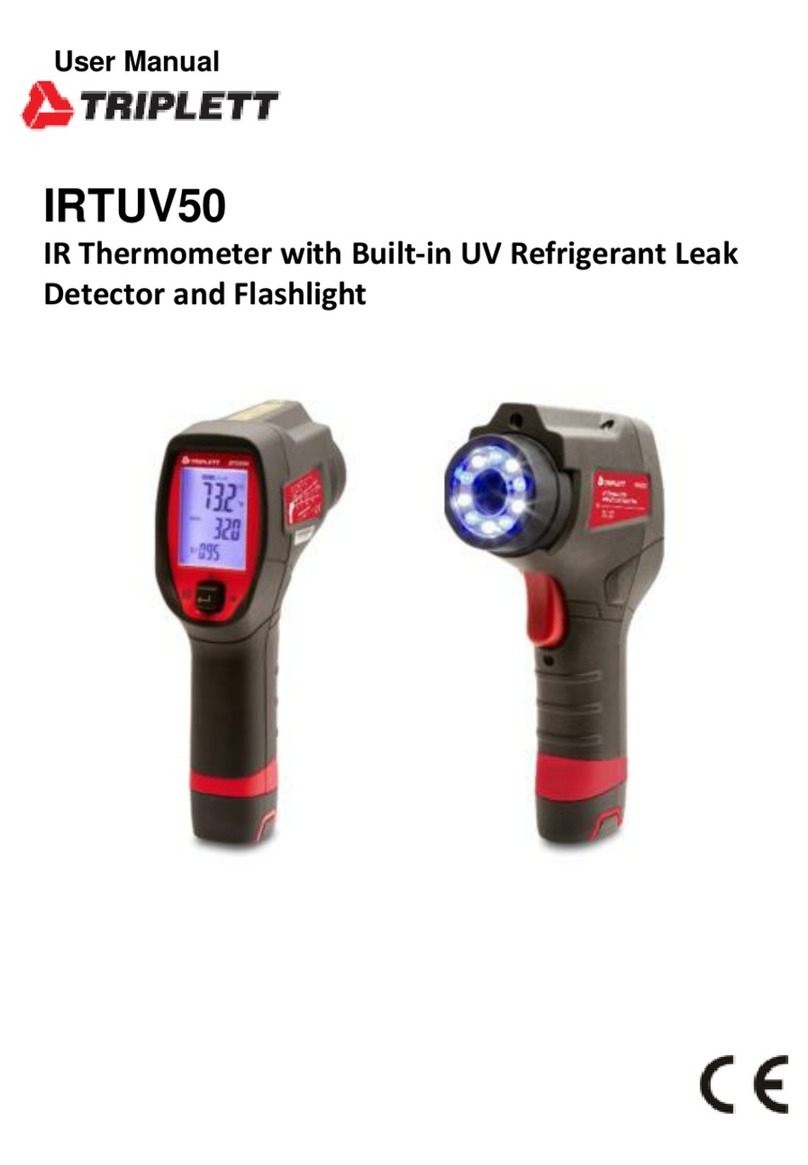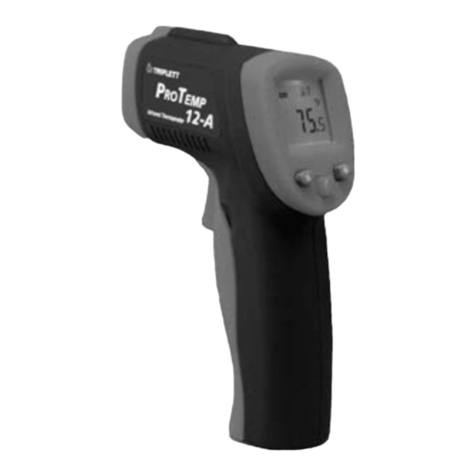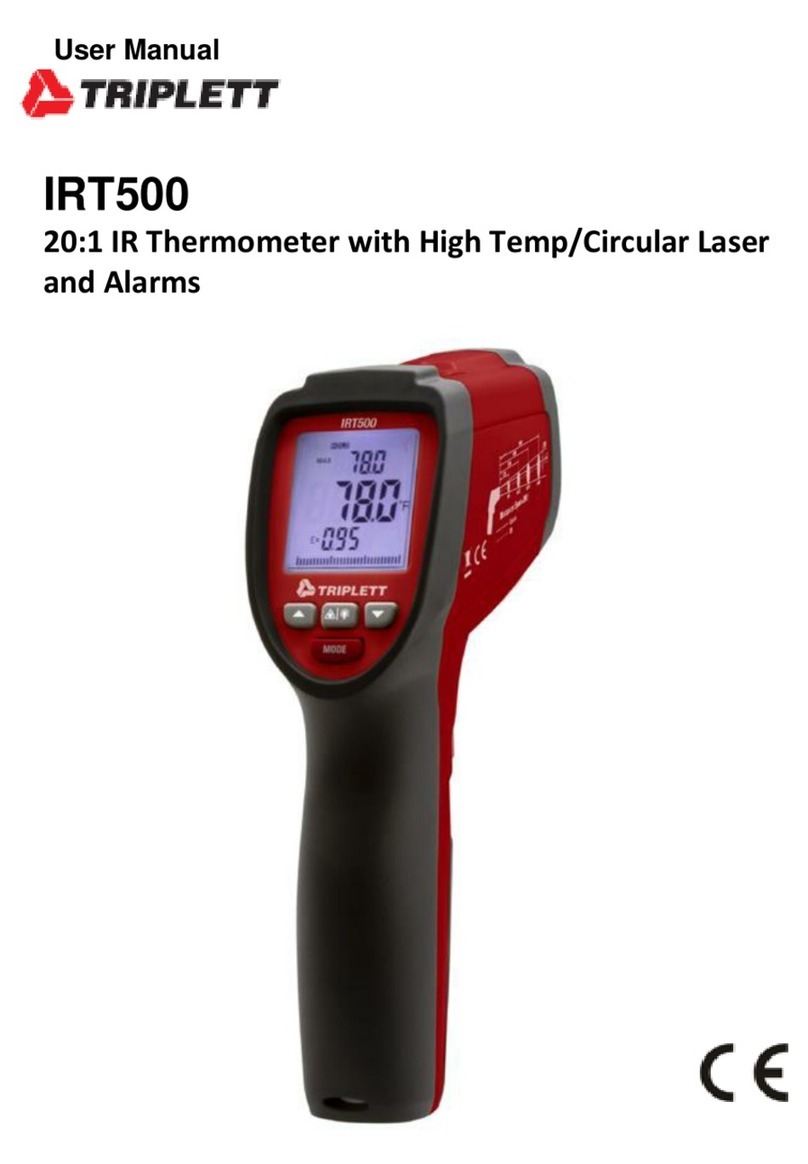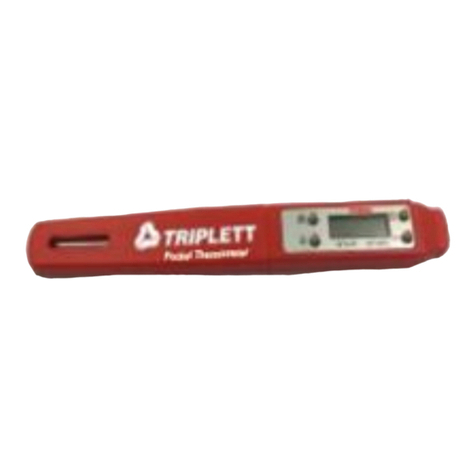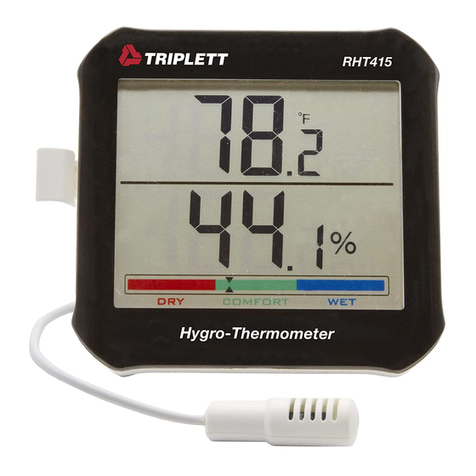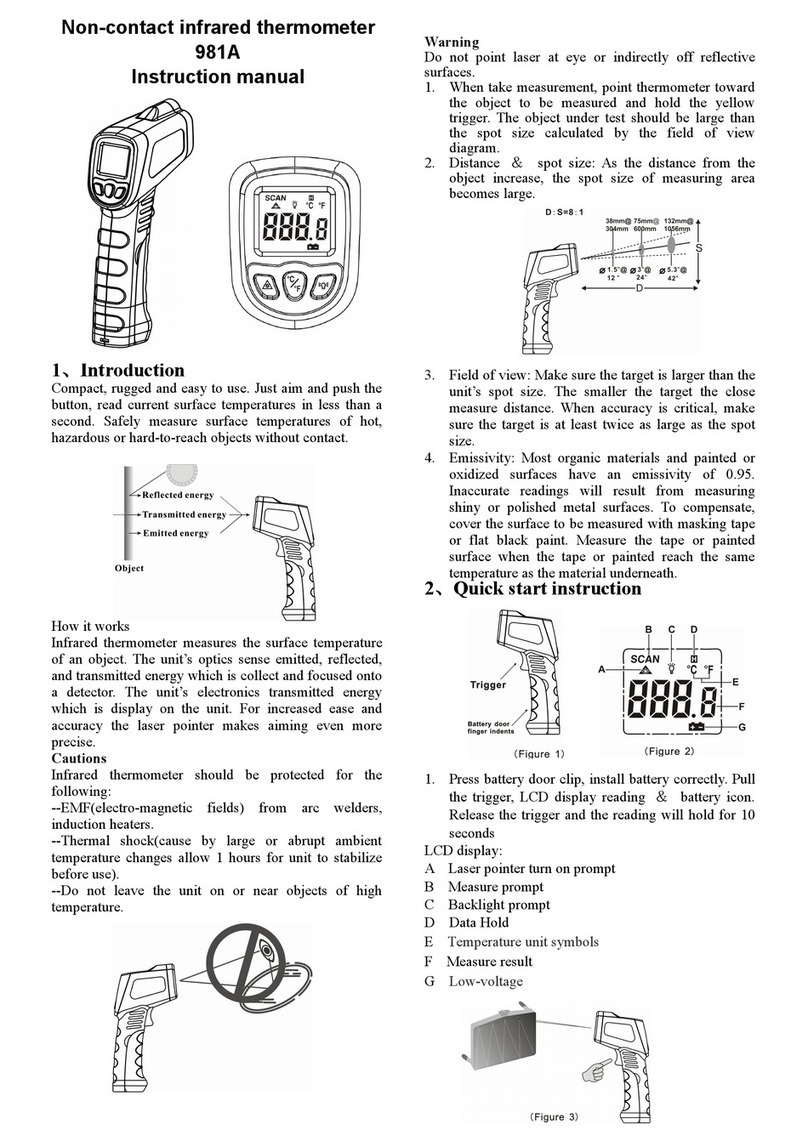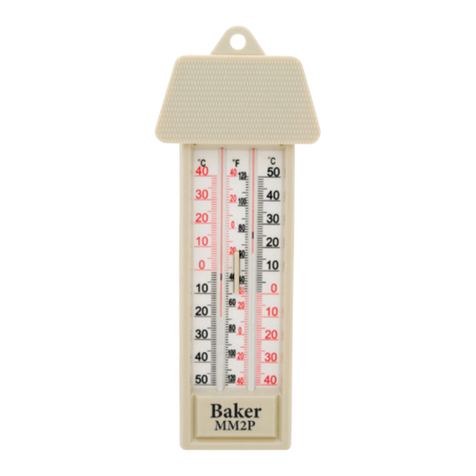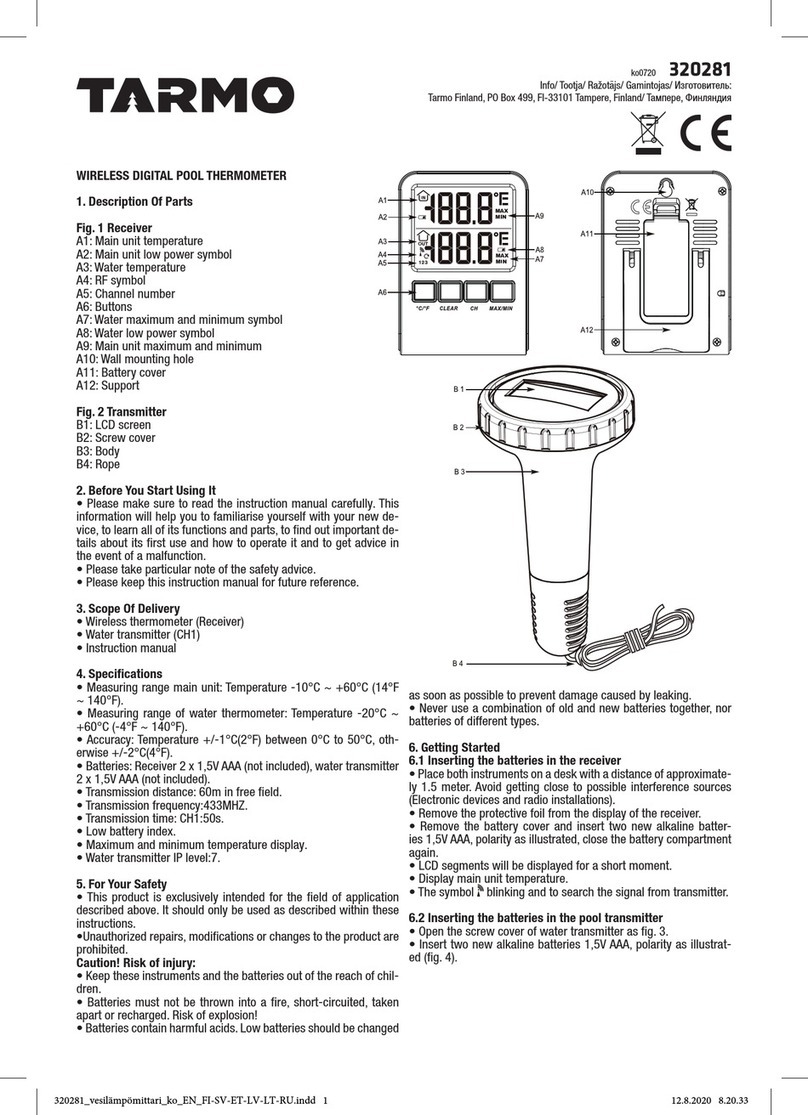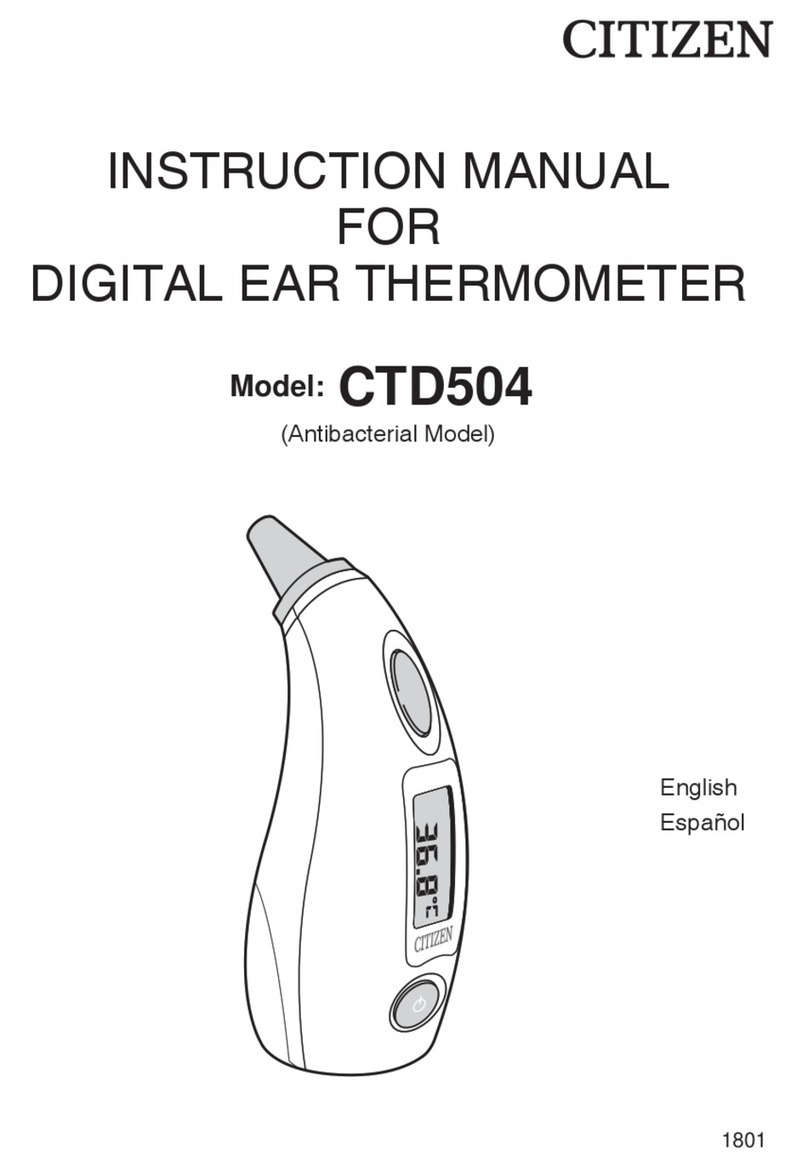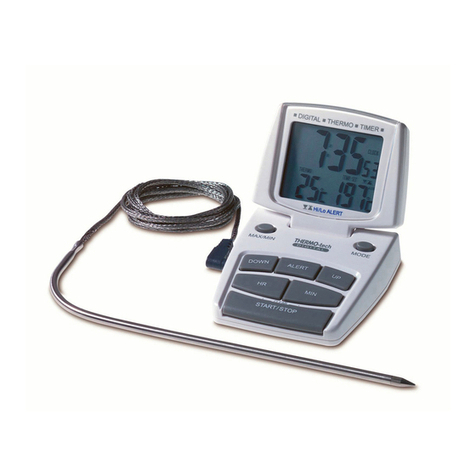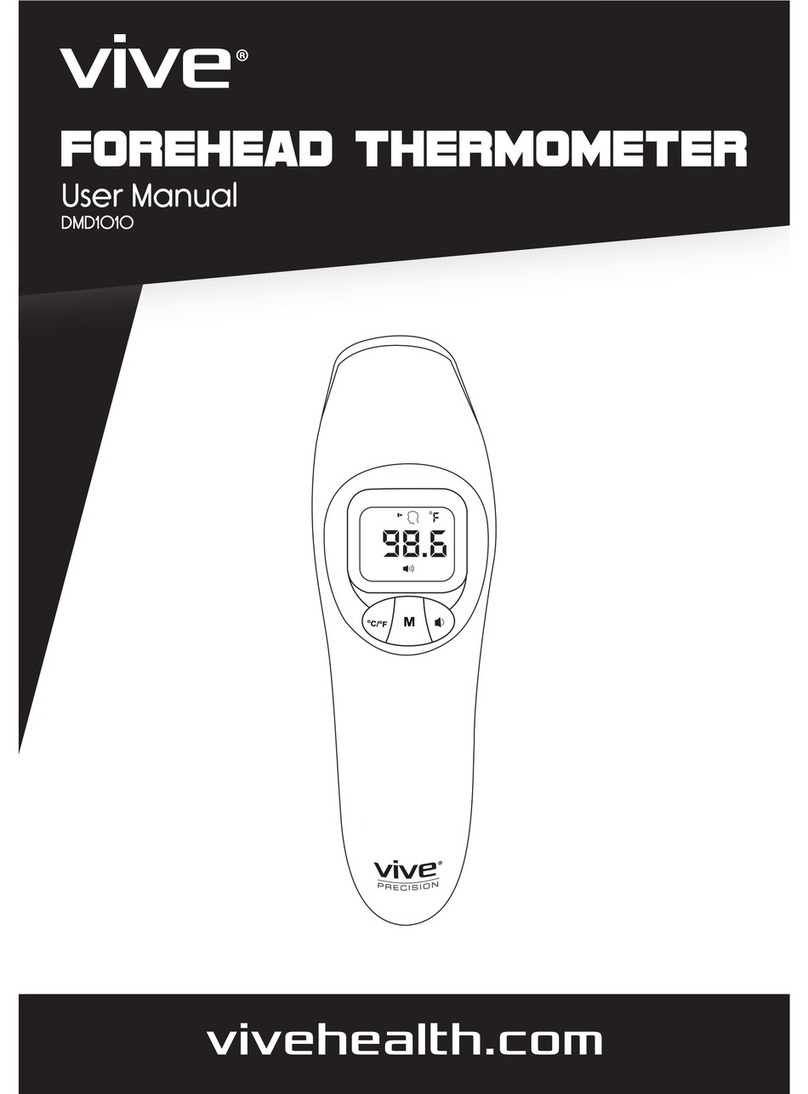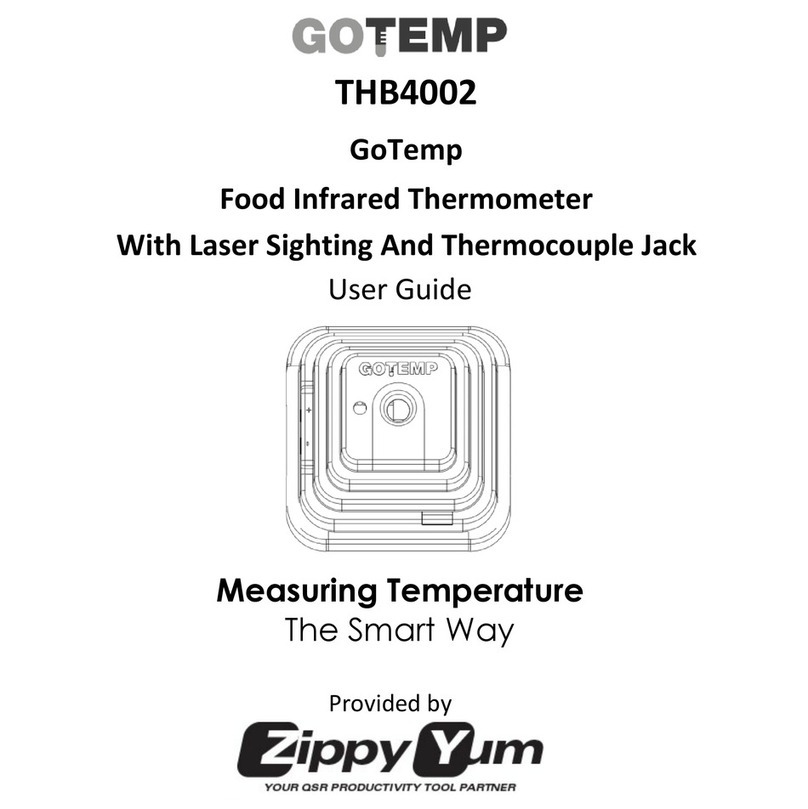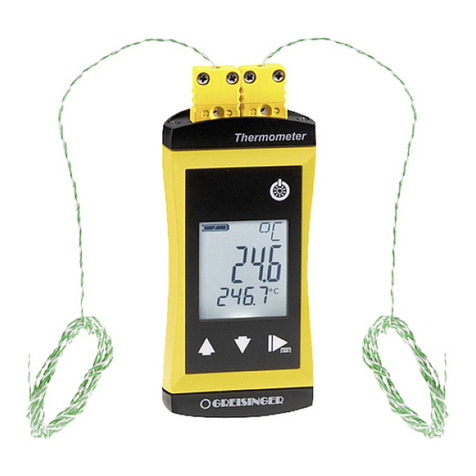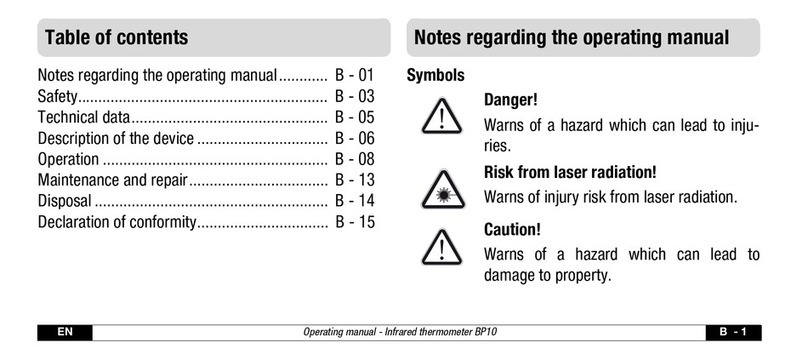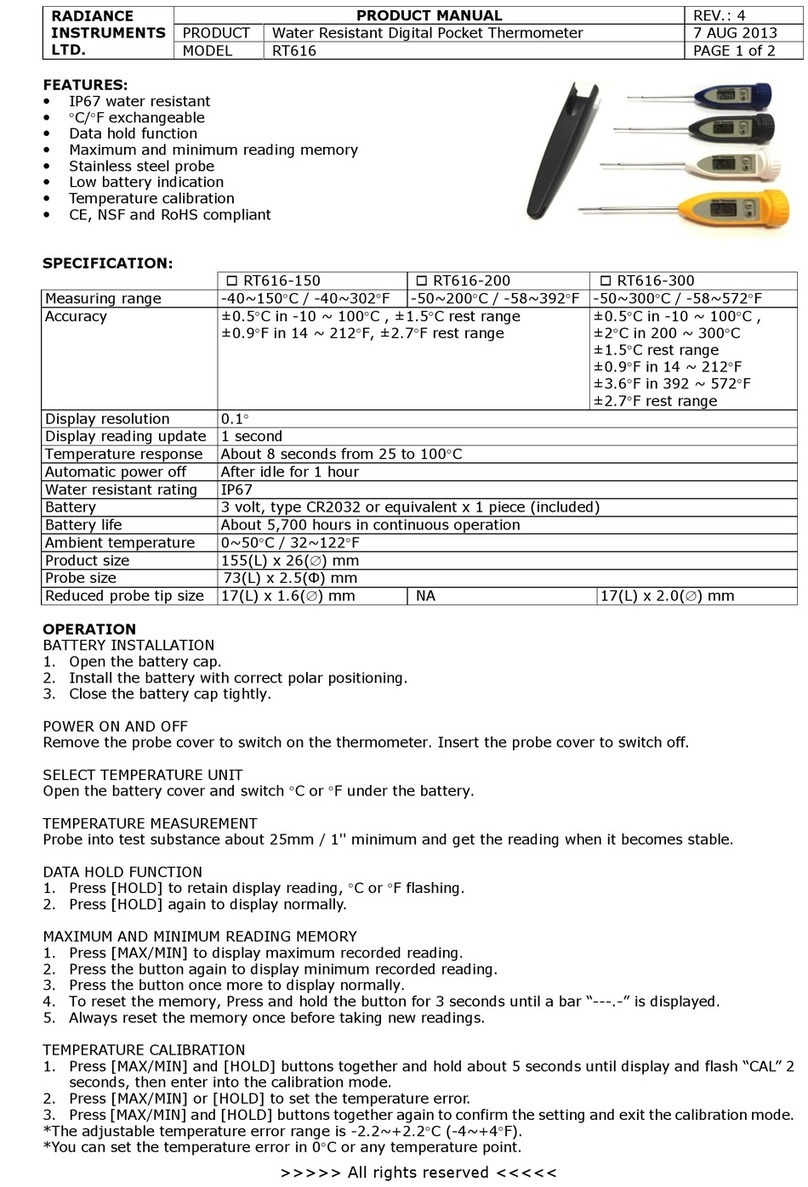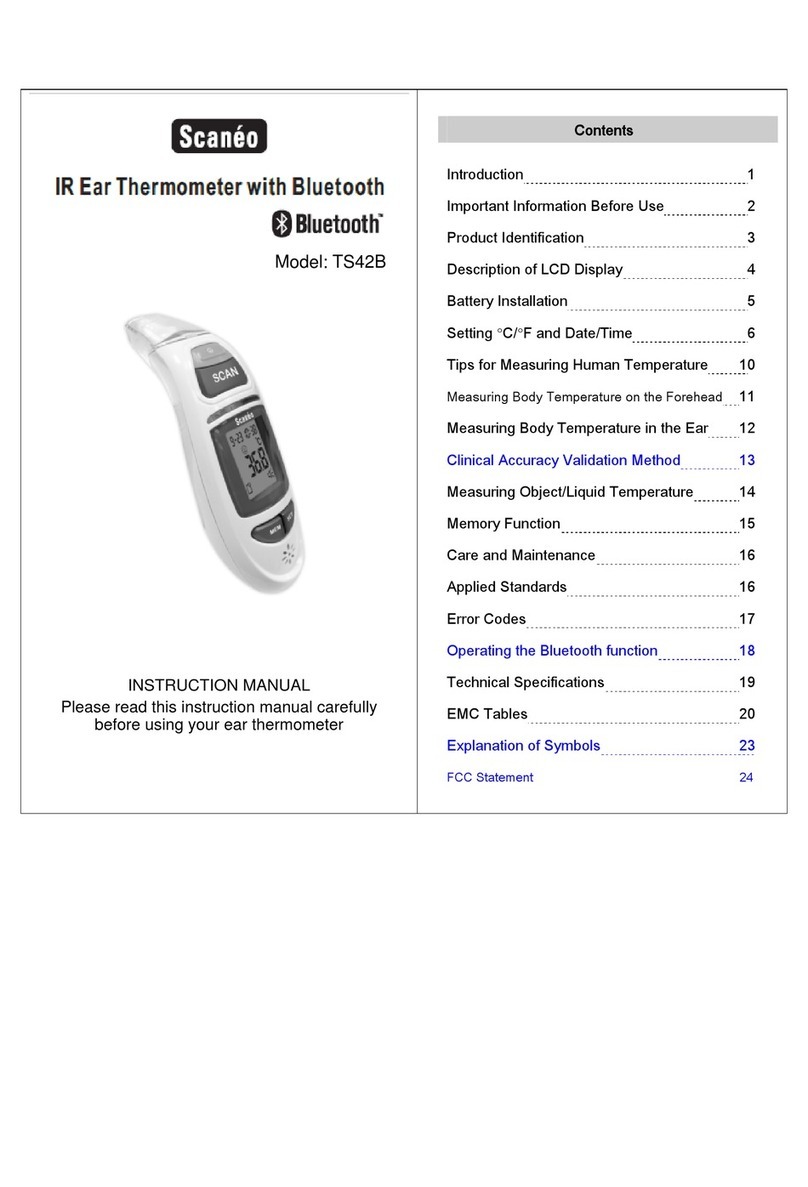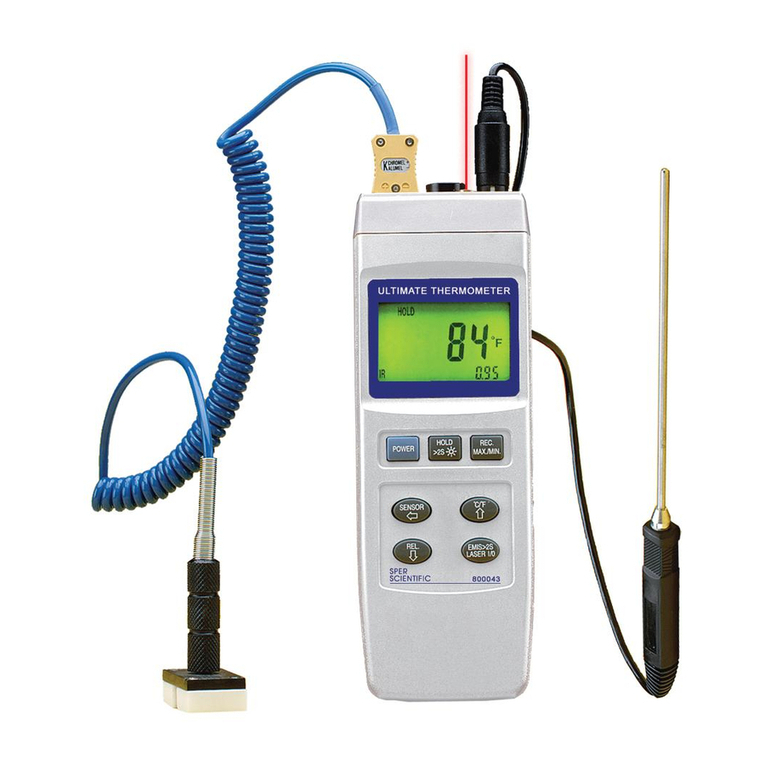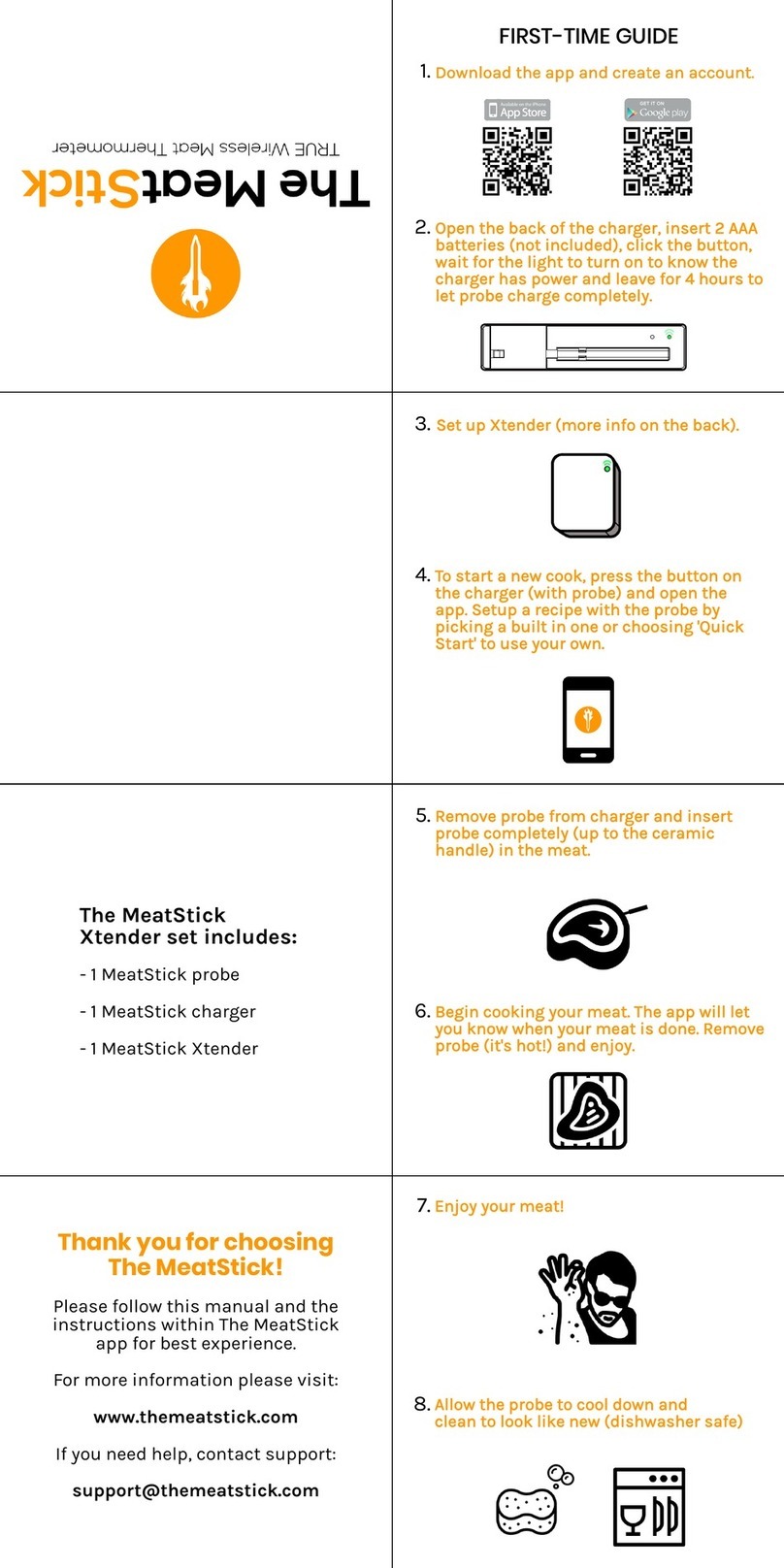
Operating Instructions
Temperature Measurements
1. Hold the meter by its handle and point it toward the surface to be measured.
2. Pull and hold the trigger to turn the meter on and begin testing. The temperature reading will
change as the user scans various targets.
3. The ‘SCAN’ icon remains on until the user releases the trigger.
4. When the trigger is released, the reading will hold for approximately 7 seconds (HOLD will
replace SCAN on the LCD) after which the meter will automatically shut off. The only exception
to this is if the LOCK mode is set to ON.
Laser Pointer
The Laser pointer optimizes the user’s aim during scanning. To turn the Laser on/off:
1. Press and release the Trigger
2. While HOLD is on the display, press the laser button once to turn the Laser on or off.
3. The laser icon will appear in the LCD when the Laser is on.
4. The status of the Laser is remembered by the meter and will remain as the ON condition
until changed.
Backlight
1. Press and release the trigger
2. While HOLD is on the display, press the Laser/Backlight button once to turn the backlight on or
off.
3. The backlight will illuminate the LCD when the feature is enabled.
4. The status of the backlight will be stored in memory and will remain as the ON condition
until changed.
5. Note: The backlight will shorten the battery life; use sparingly and only as necessary.
Over-range Indication
If the temperature measurement exceeds the specified temperature range, the thermometer will
display dashes in place of a temperature reading.
IR Measurement Notes
1. The object under test should be larger than the spot (target) size calculated by the field of view
diagram (printed on the side of the meter and in this guide).
2. Before measuring, be sure to clean surfaces that are covered with frost, oil, grime, etc.
3. If an object's surface is highly reflective, apply masking tape or flat black paint to the surface
before measuring. Allow time for the paint or tape to adjust to the temperature of the surface it
is covering.
4. Measurements through transparent surfaces such as glass may not be accurate.
5. Steam, dust, smoke, etc. can obscure measurements.
6. The meter automatically compensates for deviations in ambient temperature. However, it
can take up to 30 minutes for the meter to adjust to extremely wide changes.
7. To find a hot spot, aim the meter outside the area of interest then scan across (in an up
and down or side to side motion) until the hot spot is located.
